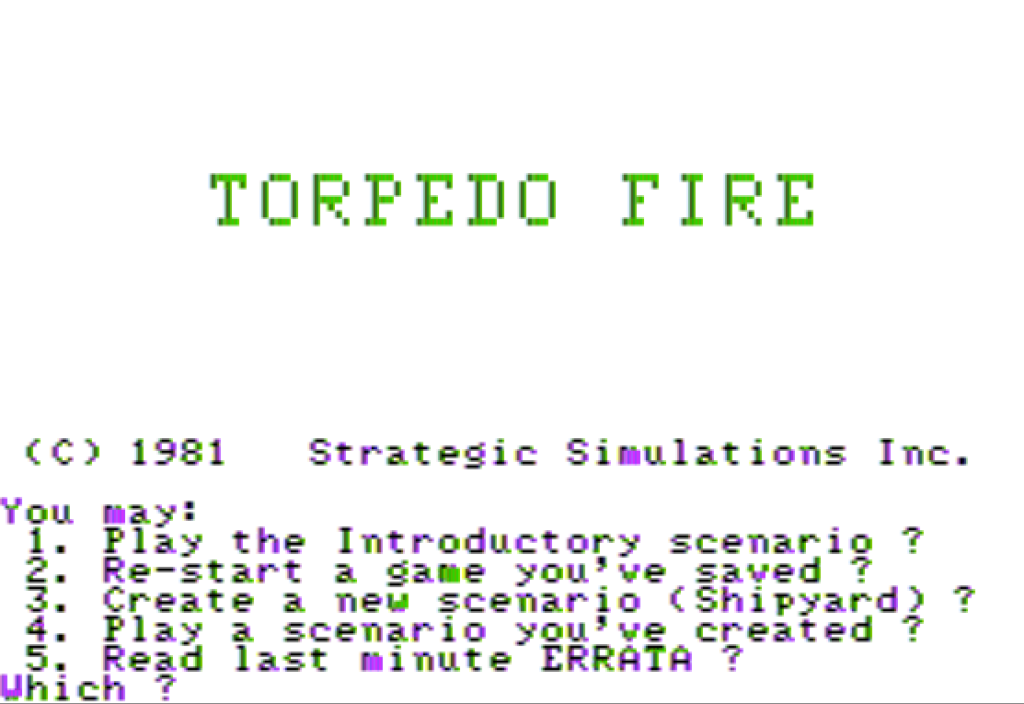
Lieutenant Narwhal… you heard the news. At least one of those new German submarines – Type XXI – refused to surrender and is now on route to support the Japanese. It won’t change the course of the war, but it could cause terrible damage.
Noted, Admiral.
You don’t seem worried. How do you plan to counter one of these in the middle of the Pacific ?
Same way I’d counter any other submarine, Admiral. Surface guns and Excel spreadsheets !
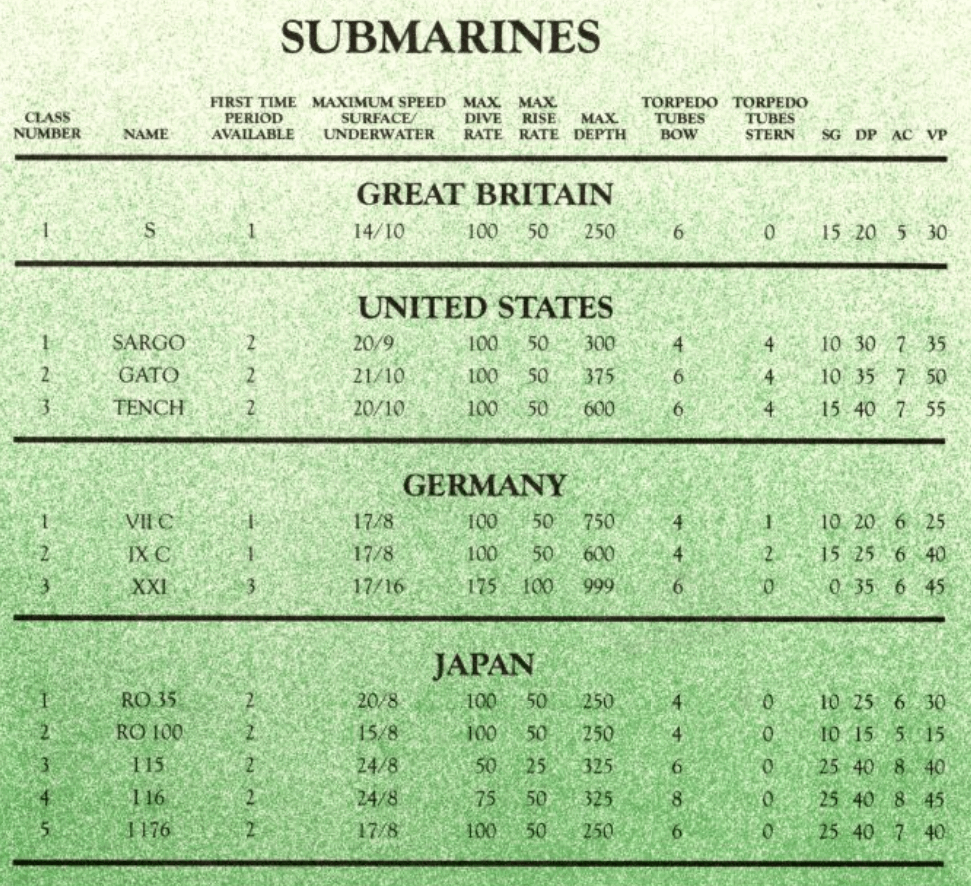
Torpedo Fire was developed by John Lyon and Joel Billings (SSI’s founder) and released in April 1981. Just like Lyon and Billings’ previous design collaboration, Computer Bismarck, it tackles a topic difficult to simulate without a third party referee : submarine warfare. And just like Computer Bismarck, they got their inspiration from boardgames, namely (by their own admission) Submarine by Avalon Hill and Up-Scope by SPI.
Now, if you’re a little bit like me, maybe you put Das Boot in your “top 3 war movies EVER” and you’ve played Silent Hunter in maximum realism mode (the one where you need to calculate firing solutions yourself) – if so you probably have a lot of expectations about the game. I must manage these now. First, if you are playing in single player, you must play the escort side. Second, the game is a hot mess. It was probably released before being finished (or at least tested) for some reason.
Torpedo Fire does not come with any scenario beyond the tutorial (one German type IX C against two British escorts) so I asked my readers to propose one. Reader BrutusTrump proposed “The Americans against a Type XXI” so from that basis I am using the scenario builder.
It is not surprising that a reader would choose the type XXI. The Type XXI was a revolutionary German design… which never saw combat in World War 2 : its first combat patrols started only a few days before the end of war in Europe. The few existing ships were then distributed between United States, France, UK and Soviet Union (clearly Canada did not deserve one^^). Those countries studied them and built their next submarines based on the type XXI (and the short range type XXIII) rather than on their own existing design at the time – to an extent the type XXI is at the same time the “father” of the Soviet Whiskey class (1951), the American Tang-class (1951) , the French Narval-class (1957) and the British Porpoise-class (1956).
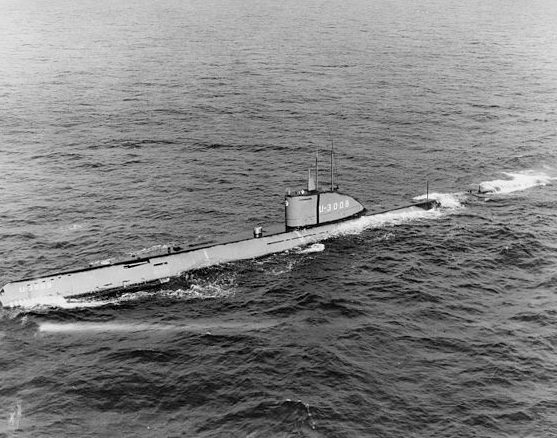
For the American side, nothing so fancy. I give myself one Fletcher-class destroyer. The Fletcher was the all-purpose American destroyer of the Pacific War : jack of all trades, master of none. In game terms, it has a powerful surface gun, but fewer anti-sub weapons than more specialized ships. It is also very fast, and sturdy.
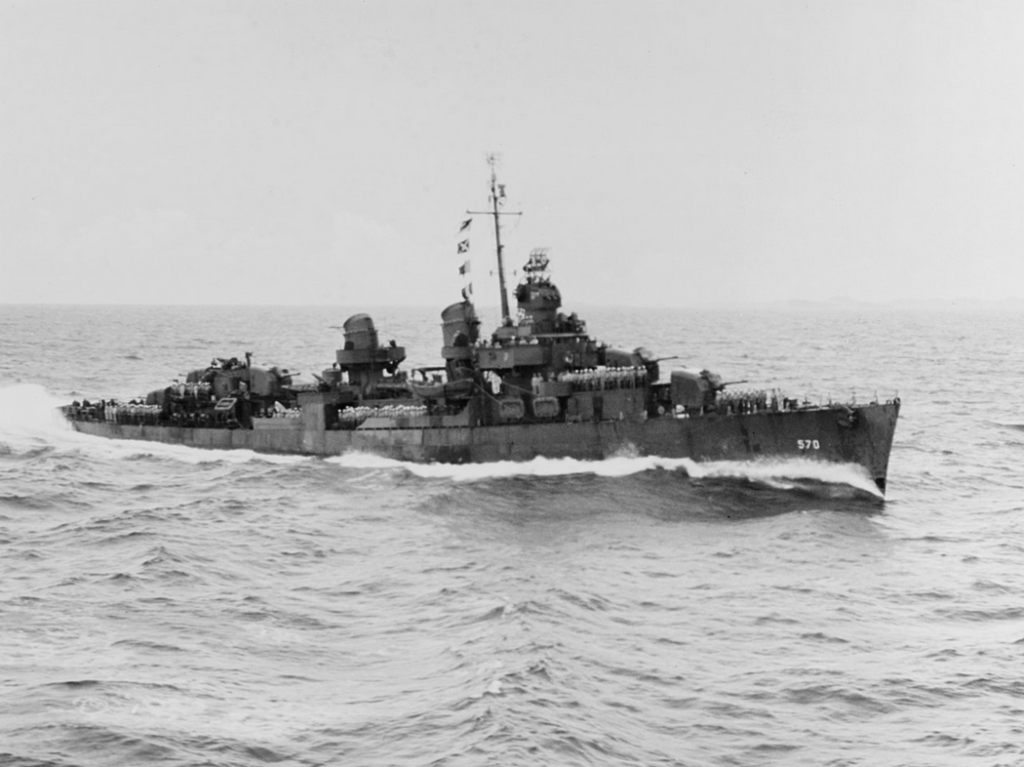
I also give myself two Buckley-class. This class of ship is a dedicated convoy escort : it is relatively slow, because the convoys they escort are slow anyway, it does not have good surface guns, but it has numerous anti-submarine weapons.
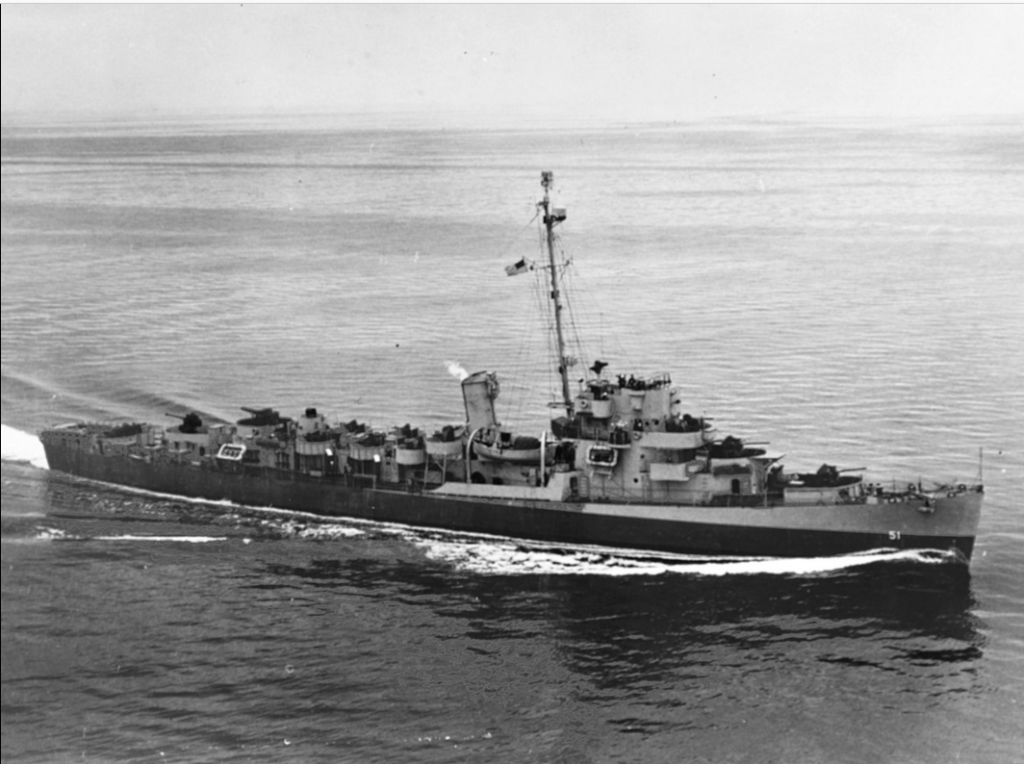
Finally, as targets for the German submarine, I add 1 tanker and 3 freighters.
Here are my ships’ statistics :
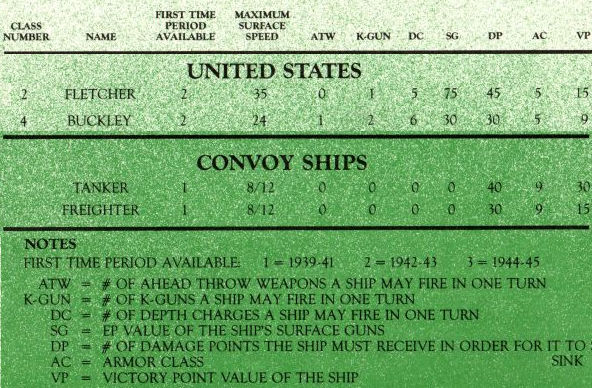
I choose to have the battle by night, hoping to help the AI. Is it balanced ? No idea.
I deploy my ships in the least imaginative way possible :
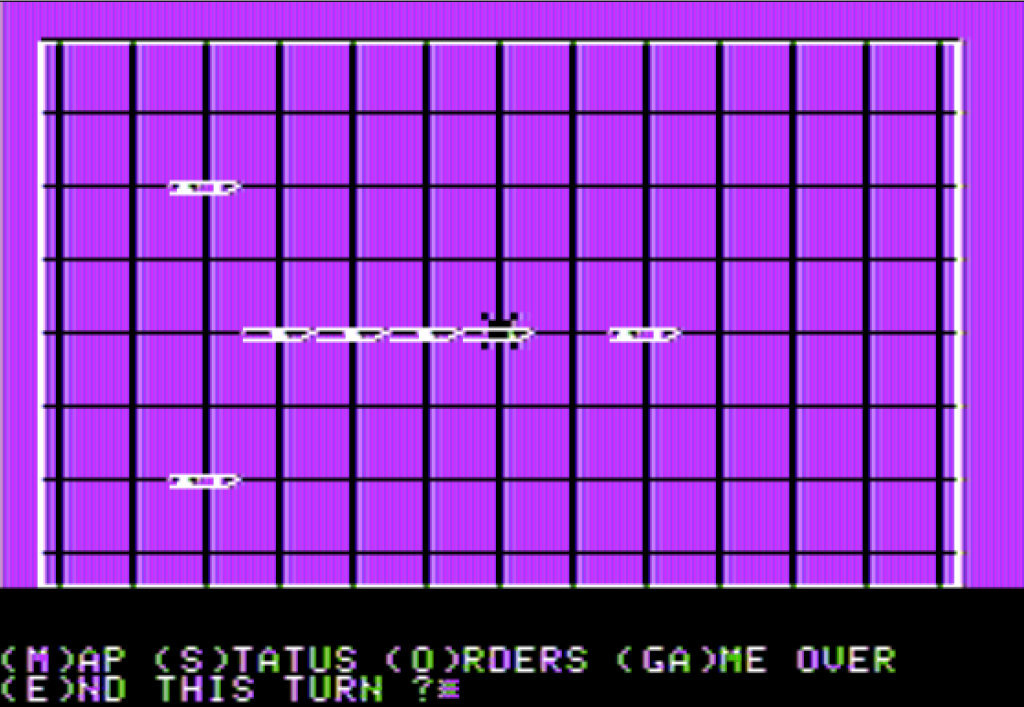
The Fletcher (“E1”) is on point, the two Buckleys at the back and on the side.
A couple turns pass where the convoy is just moving forward, until finally :

A sub is detected by sonar !
I even have it displayed on my map :
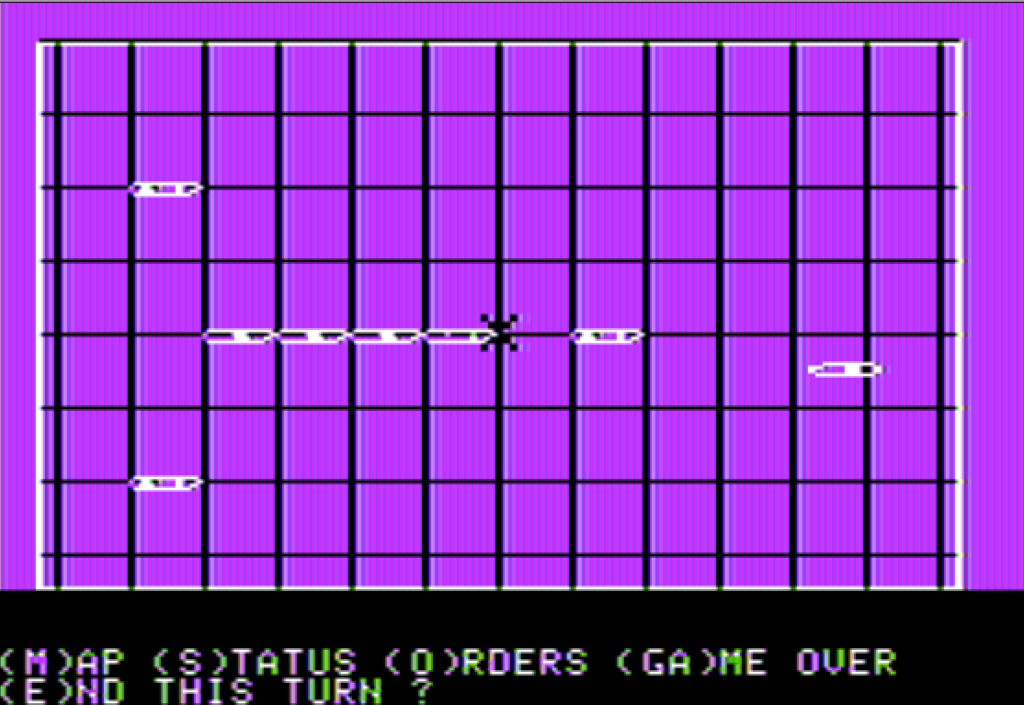
I know its direction from the map, but I don’t know its speed nor its depth. In reality, I believe that I should have known the approximate depth and the speed at which it was getting closer or further from the sonar.
In any case, I order the Buckley (E3) in the South to accelerate and move to the front of the convoy, but no change yet for the Buckley in the North (E2) : if the submarine turns South I will want my Buckley to move South by passing behind the convoy, if the submarine turns North I will want my Buckley to move directly to the front of the convoy.
The situation is clarified next turn, as the submarine turns South… and is now surfaced.

Being a surfaced submarine in the age of radar is risky, as I am going to teach the type XXI. Unfortunately, shooting guns in Torpedo Fire is not trivial : you cannot just point at a target, you need to input a direction and a range. Fortunately, that’s easy trigonometry that can be automated in Excel :

And therefore :

Meanwhile, given the submarine moved South, I order my convoy to turn North and transfer the Northern Buckley (E2) to the South of the convoy :
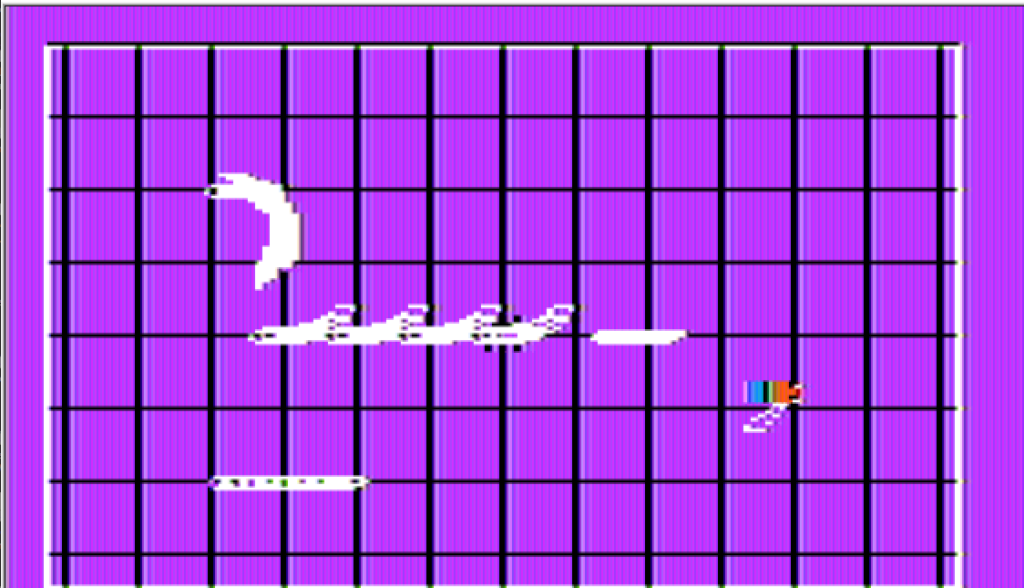
Turn resolution time : the German submarine is hit by the power of trigonometry :
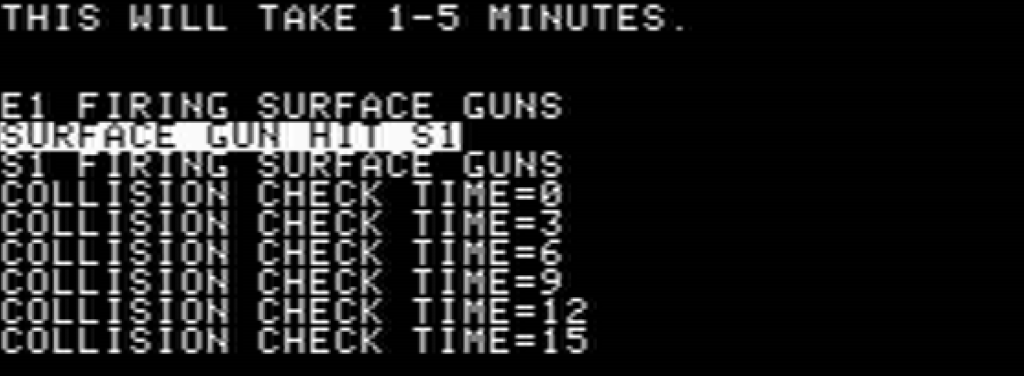
Hit, but not destroyed, the submarine dives. My fleet is on its tail.
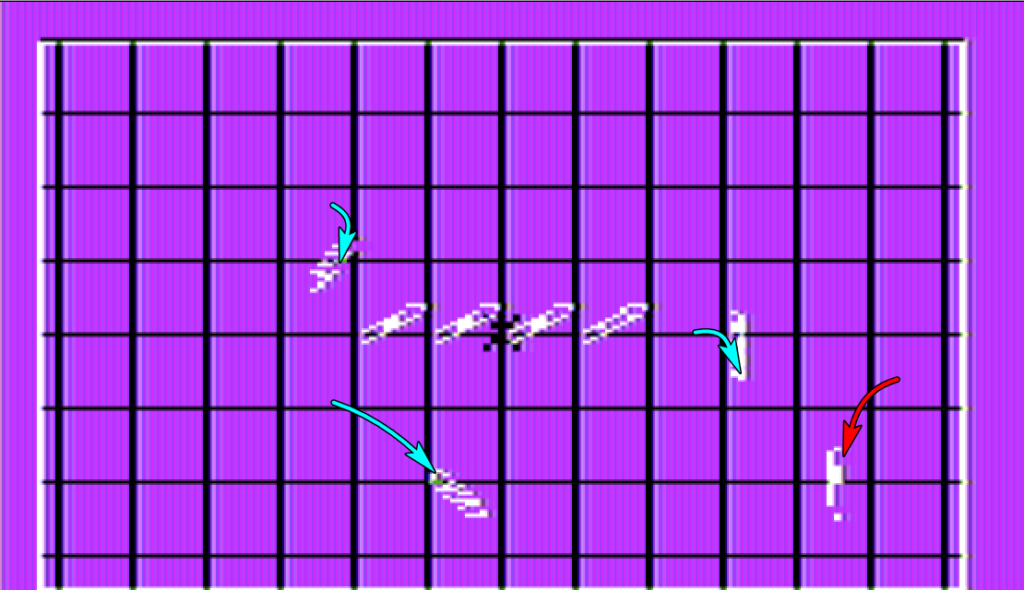
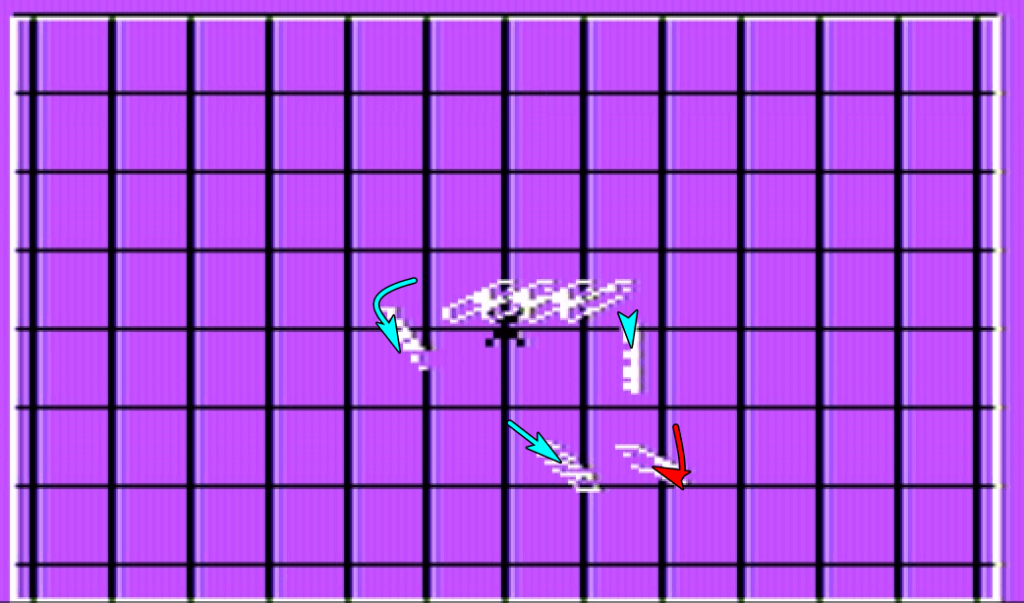
There are two small things to note for this pursuit :
- The Fletcher is going very slowly – at 8 knots. The faster a ship goes, the worse its sonar is, and at the moment I want to know where the sub is,
- The convoy ships can only change direction, as a group, every 5 turns, and they change direction only by as much as they can rotate in one turn – that’s why they are currently offering a nice flank to the submarine.
After two turns of evasion, the sub decides… to surface again!
Of course, I point all my guns on the submarine, but miss:
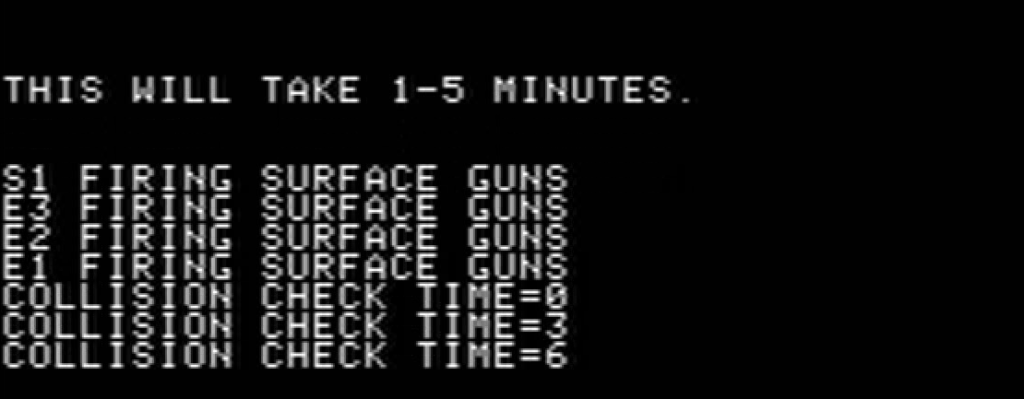
The sub dives again, but we are very close now :
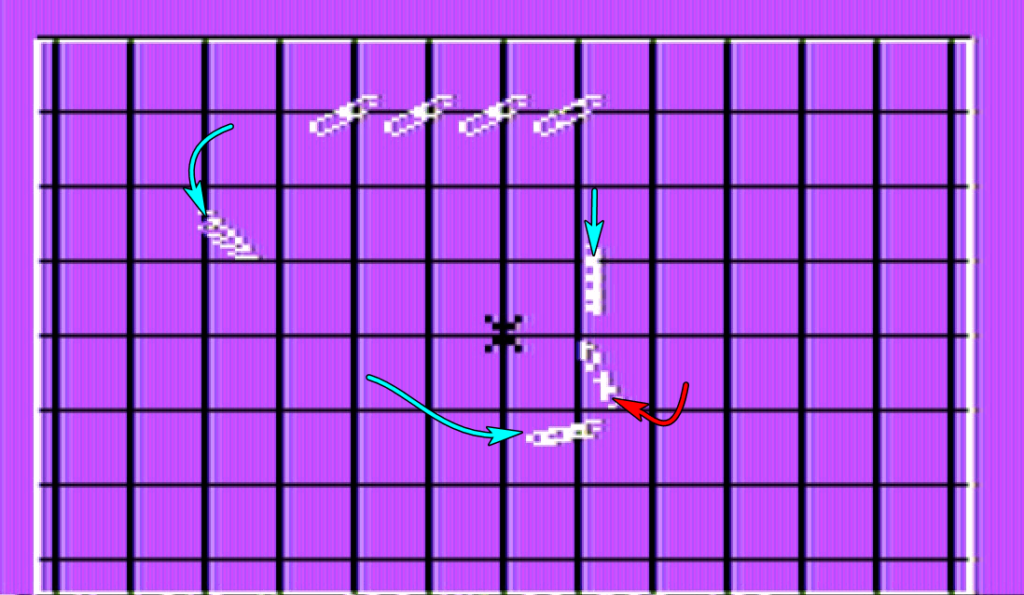
At this point, the plan is to accelerate and turn with my Fletcher to the right and start dropping depth charge next turn, while the Buckley will slow down and use his sonar to guide the Fletcher.
And then this happens :
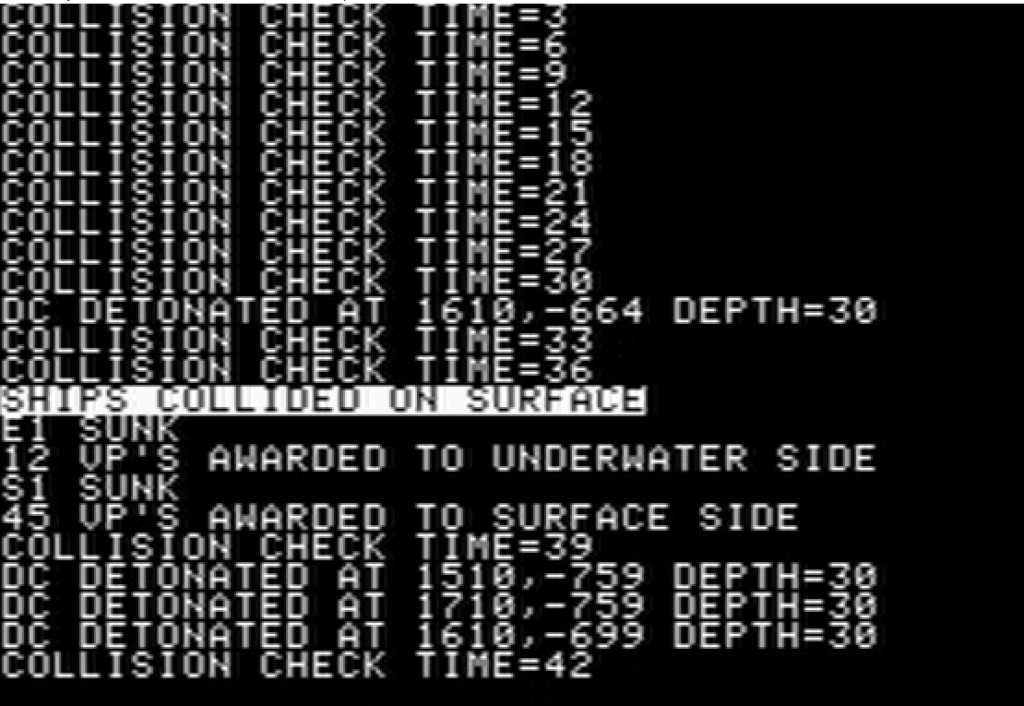
The submarine had decided to surface again – pretty stupidly given it was surrounded by destroyers and knew it, and in Torpedo Fire collision means destruction of both ships. Also, in Torpedo Fire, ships collide whenever their centers are distant from each other by 150 yards or less – so in reality you should not see your ships as long and narrow, but as disks of radius 150 yards.
In any case, this would have been a disappointing ending, so I decided to reload and turn my Fletcher in the other direction :
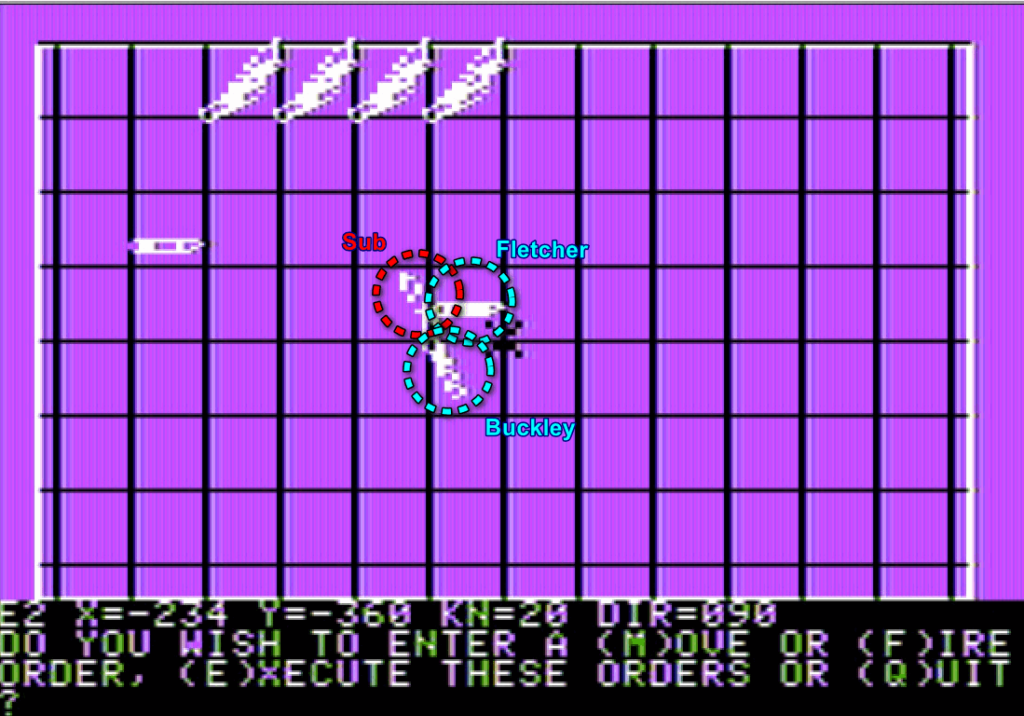
Since the sub is surfaced, I shoot with all my guns. Wait, no I don’t, because I made a typo while writing the fire order for the Fletcher, and once you have given an order with the surface gun even if you cancel it the game considers the gun has shot for the turn.
In any case, I miss again.
I am still in pursuit of the sub. I mismanage my speed and direction, and I let it get really close to my convoy :
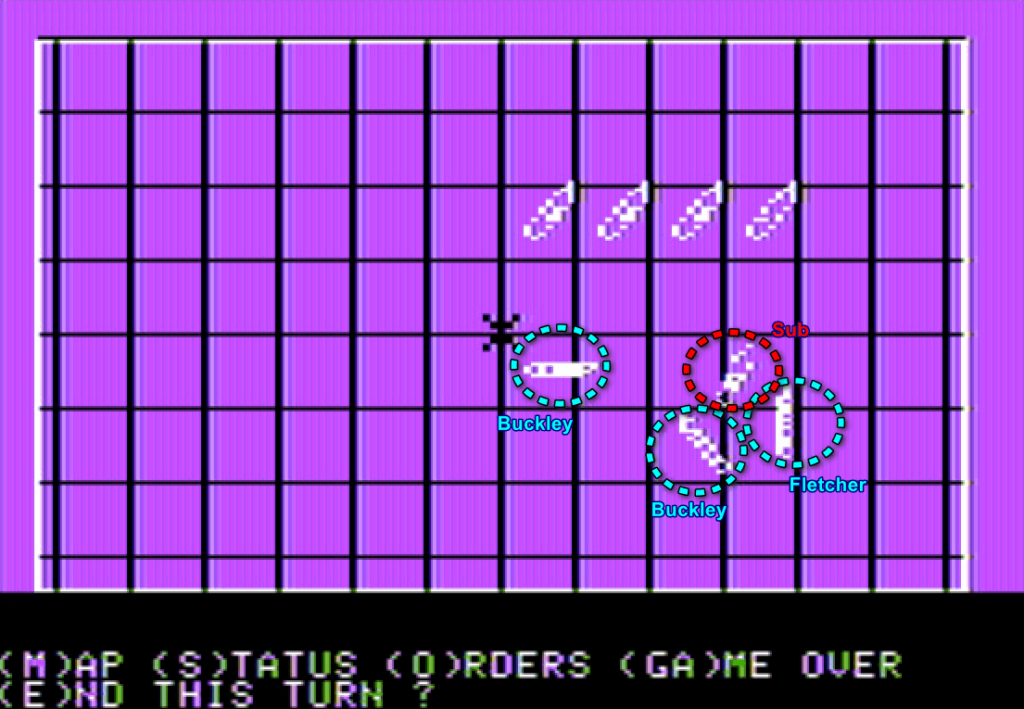
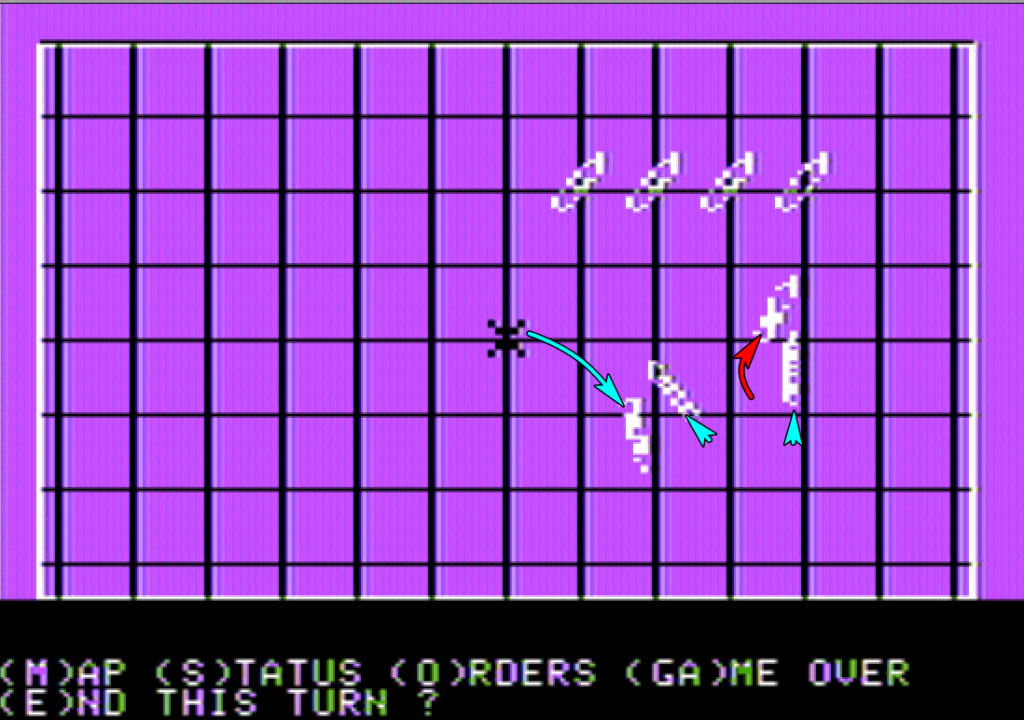
And that’s an opportunity the German sub does not let pass by :

Even worse : as I accelerated to catch up on the submarine, I lost it from my sonar.
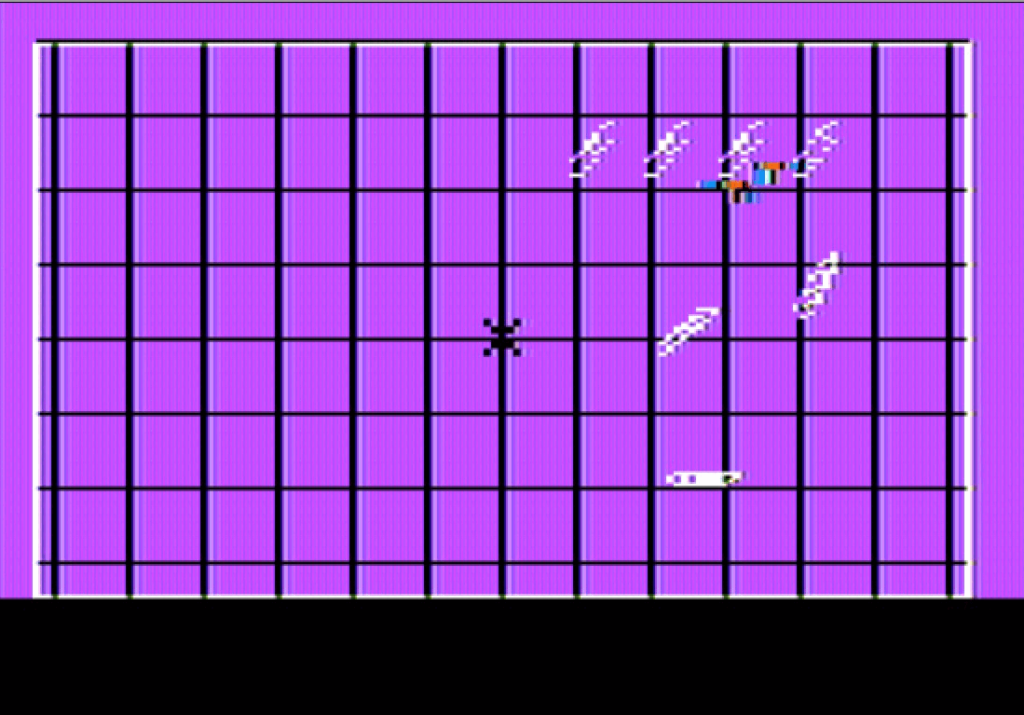
As the torpedoes approach my convoy, the next turn resolution is nail-biting :
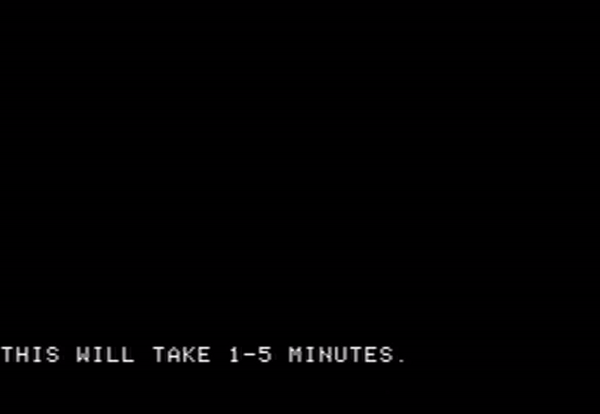
Nail-biting, but also long (I cut before the end, else it would have lasted until CHECK TIME=60). Two torpedoes missed, one more torpedo on the way.
That’s good news, even better news – the submarine has decided to surface again :
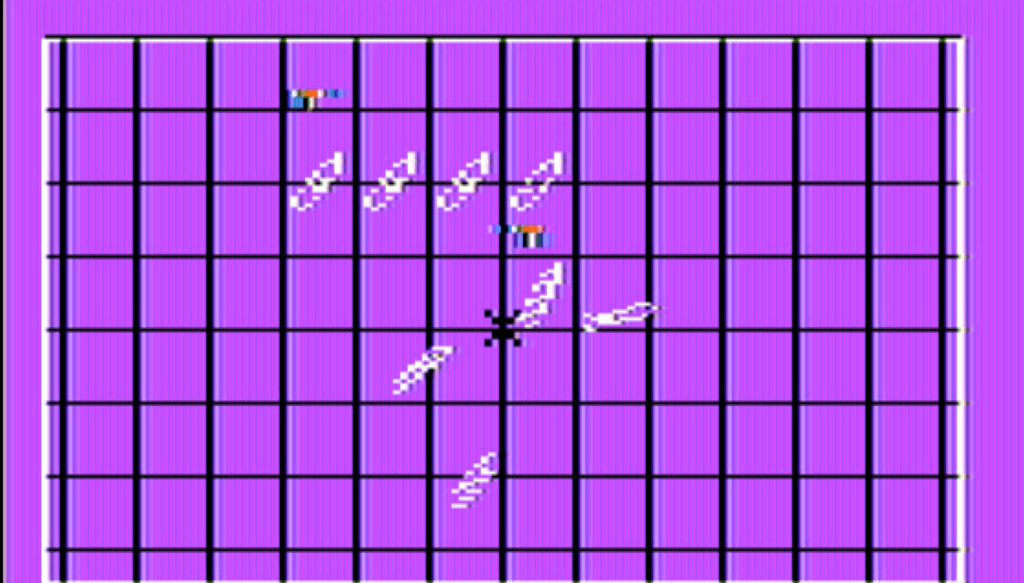
More surface guns are pointed at the enemy submarine, and I score another hit…
… but then so does the submarine, though miraculously the freighter is not sunk !
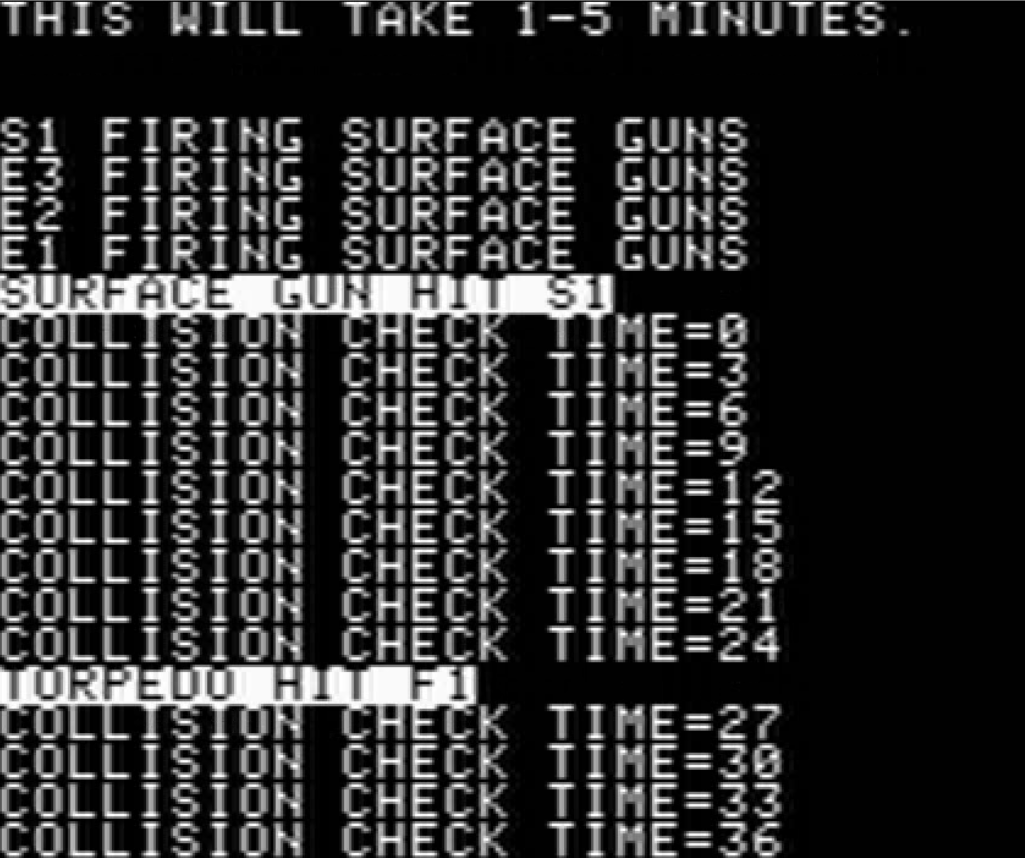
After this, the submarine dives again, disappears from sonar for a turn then reappears in the East :
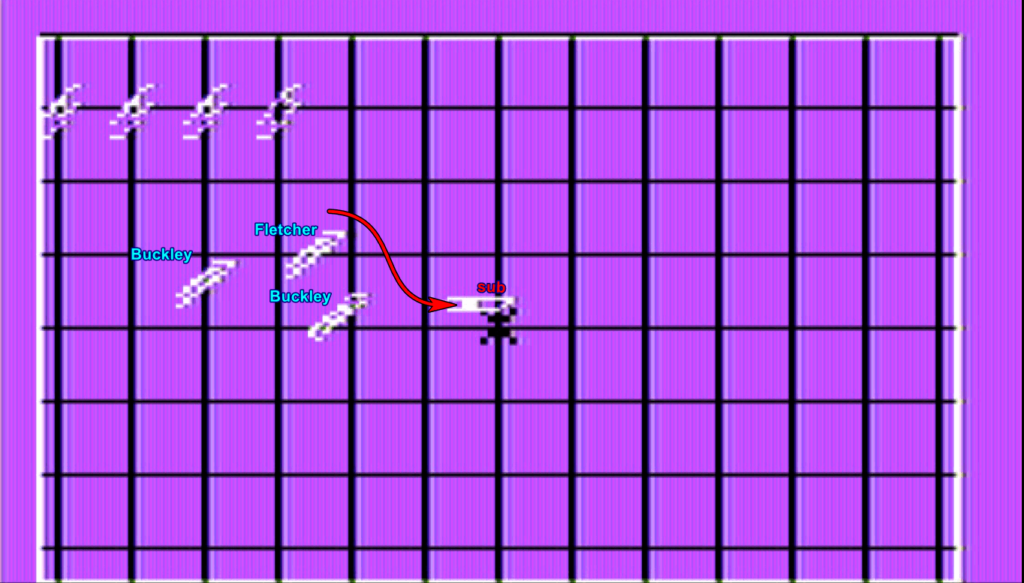
It is underwater, and remains so the following turn as my fleet approaches :
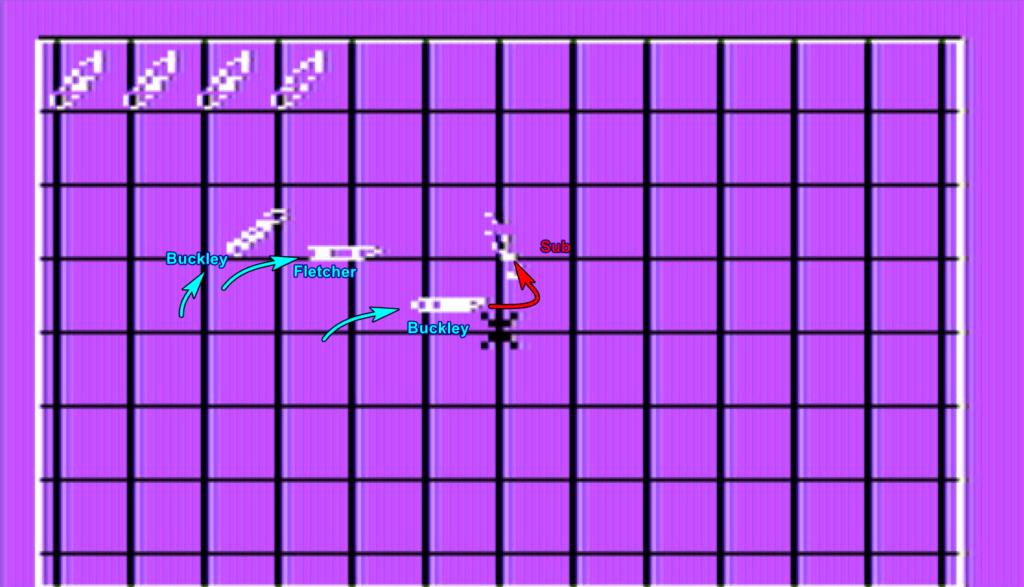
I should be able to deliver a real barrage of depth charges soon if only I could get closer …
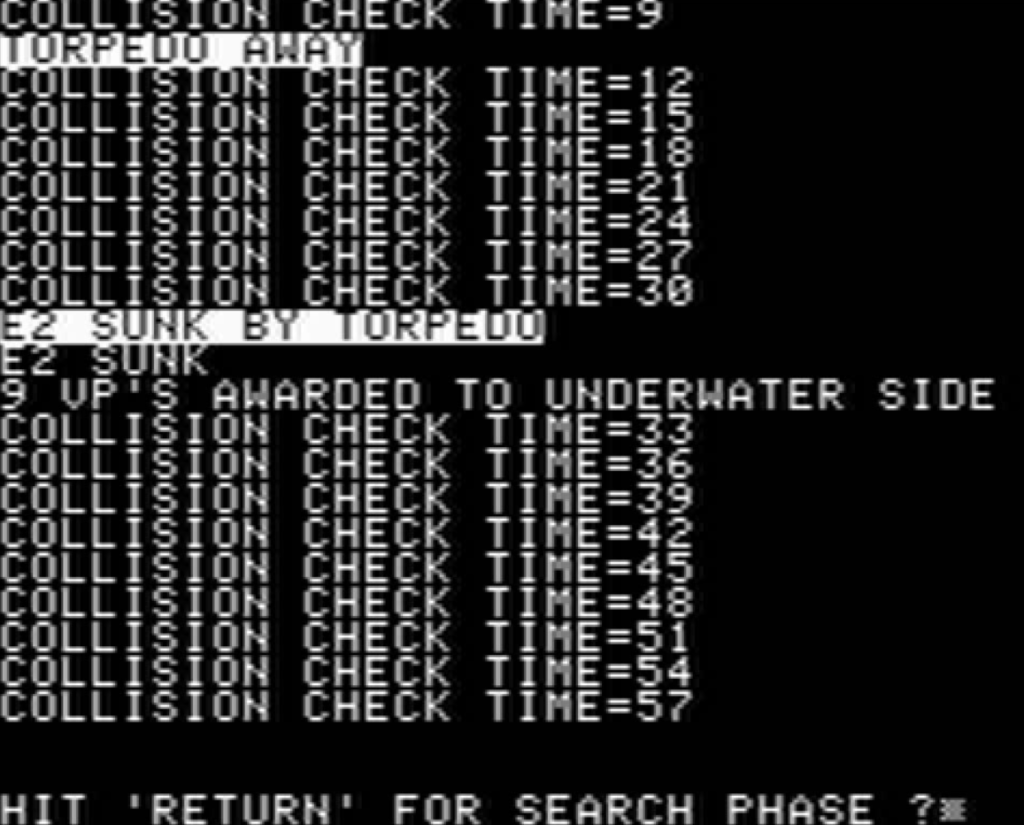
Darn it ! The German sub sent a torpedo that found one of my destroyers in 18 seconds, destroying it !
E2 was a Buckley, so suddenly my anti-submarine capacity is well-diminished !
On the other hand, I am really in range to do something now :
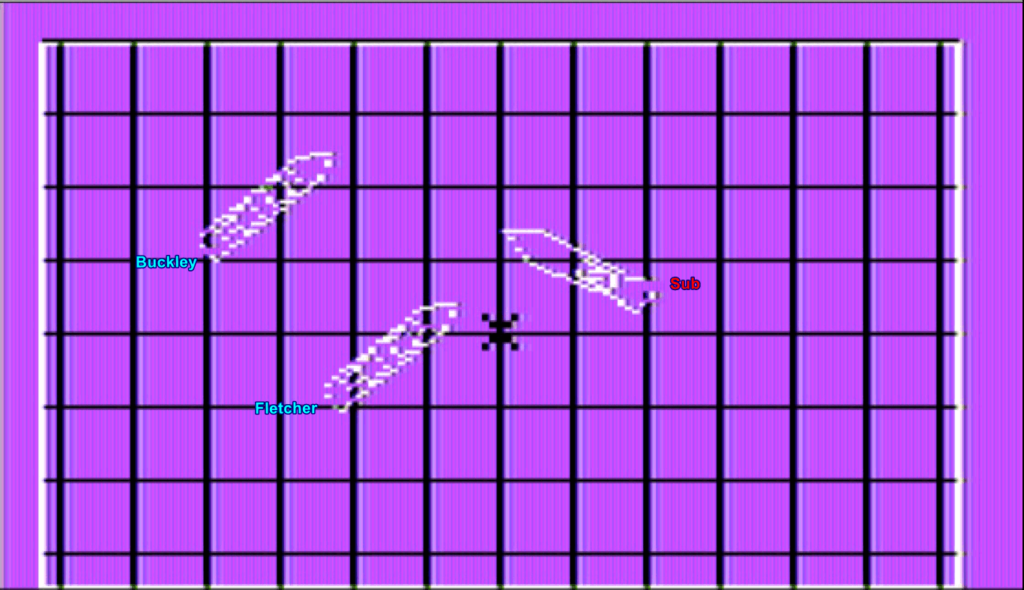
You see, I have three types of depth charge.
- The “normal” depth charges (DC) are laid out behind the destroyers, and explode at a pre-determined depth (they take 1 second to sink 10 feet)
- The K-guns are released on the side, and also explode at pre-determined depth under the same conditions,
- The Ahead Throw Weapons (ATW) are shot in front of the destroyer, at 150 to 250 yards. They also dive at a speed of 10 feet / second and explode when they come near a submarine.
Each class of destroyer can shoot more or fewer of each type. For instance, the Fletcher has no ATW, but can use 5 DC and 1 K-gun by turn, whereas the Buckley has 1 ATW, 6 DC and 2 K-guns by turn.
With the Buckley, I prepare a massive barrage in front of the German sub. I set the bombs to explode at depth = 30 feet, as that’s the maximum periscope depth and in my experience the only one the computer uses.
This corresponds to a long string of commands :

I check the explosion pattern :
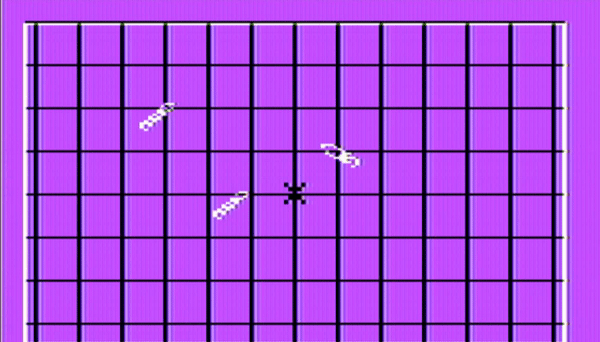
Perfect !
The Fletcher supports as much as it can though I believe it is a bit off-position. Here is the final pattern (some grenades are not shown as they will explode next turn) :
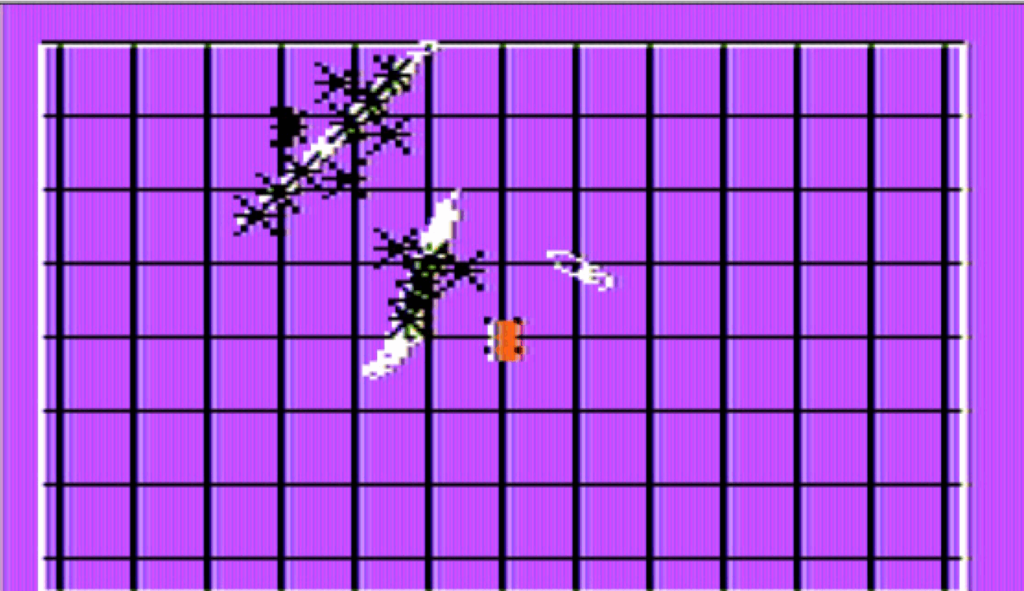
I resolve the turn : the grenades explode a bit in front, but not very far. If I slow down the Buckley and turn slightly toward where I expect the submarine to go, I can drop grenades right on top of it ! This is my pattern :
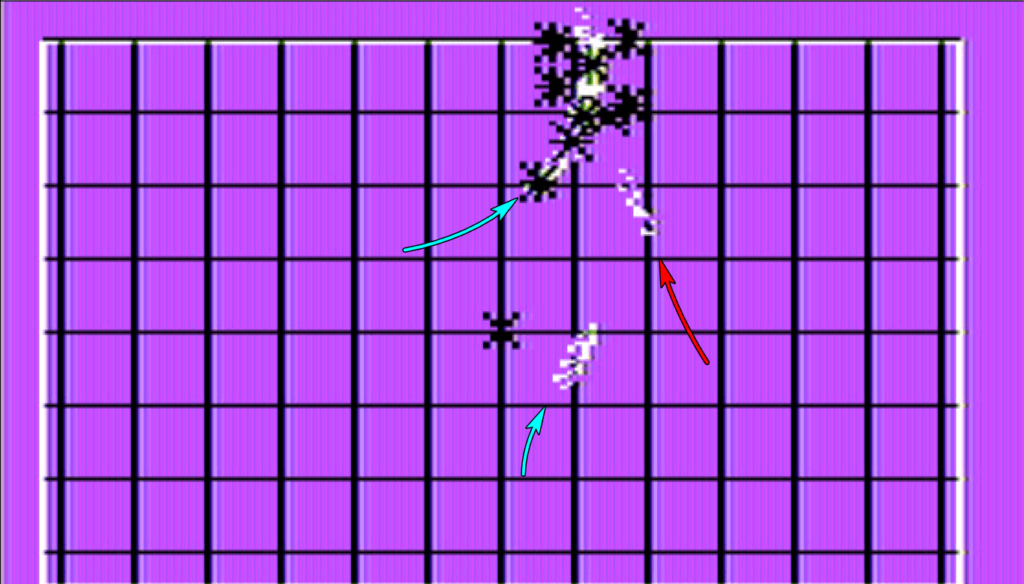
Full of hope that I am going to hit bullseye, I check the turn resolution and …
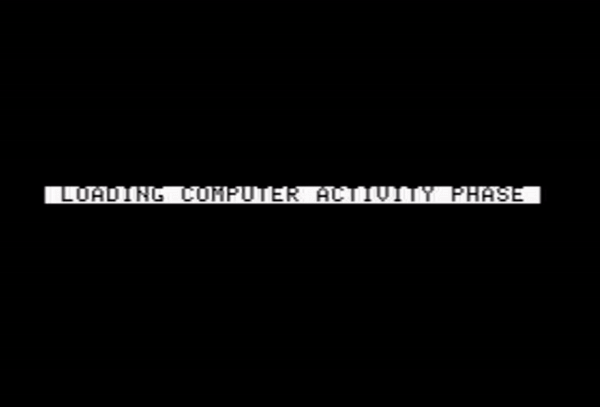
(-╯°□°)-╯︵┻━━━━━┻
I am not sure if my depth charges forced the submarine to surface (and to collide with my destroyer) due to the damage they caused, or if it had foolishly planned to surface anyway, but well – I won.
And of course, the game does not actually tell you that you won even after you sunk every single enemy asset. You can only have a confirmation when you type the command [GA]ME OVER and check the result :
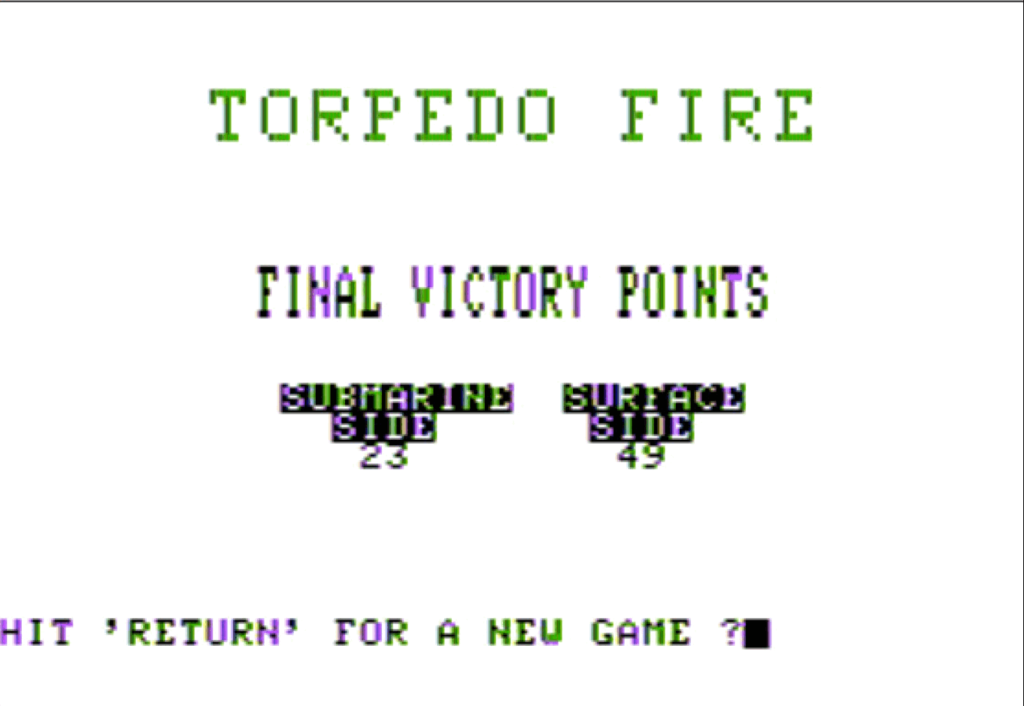
Why do I have 49 points when I sunk only one ship worth 45 points ? Easy : the escort player gets 1 point for every torpedo sent by the submarine player. It is not really exploitable in practice, but I find it amusing that sinking a submarine still full of torpedoes is worth “less” than sinking a submarine that has fired all its torpedoes.
And on this final nitpick, that’s a wrap for the AAR.